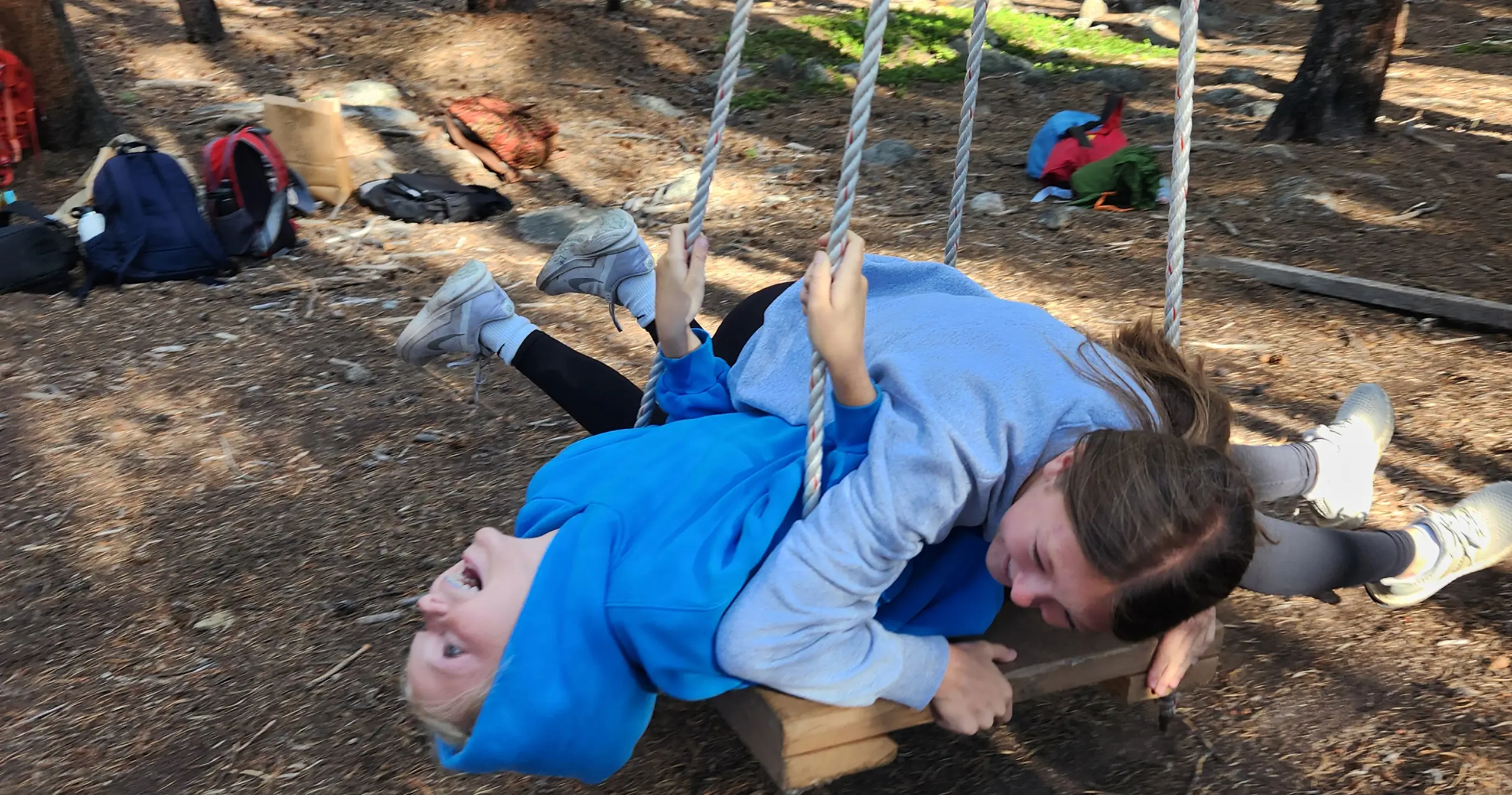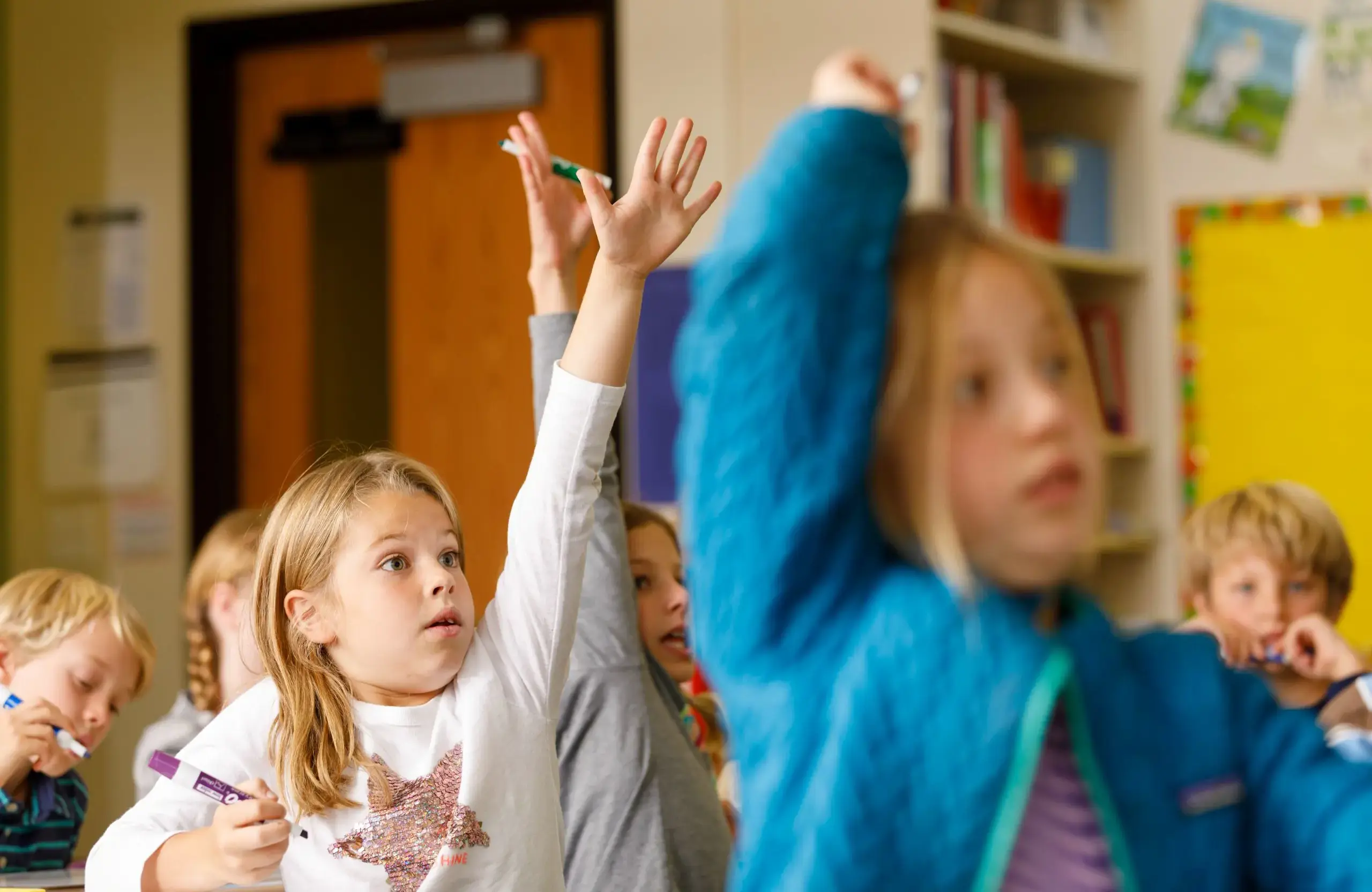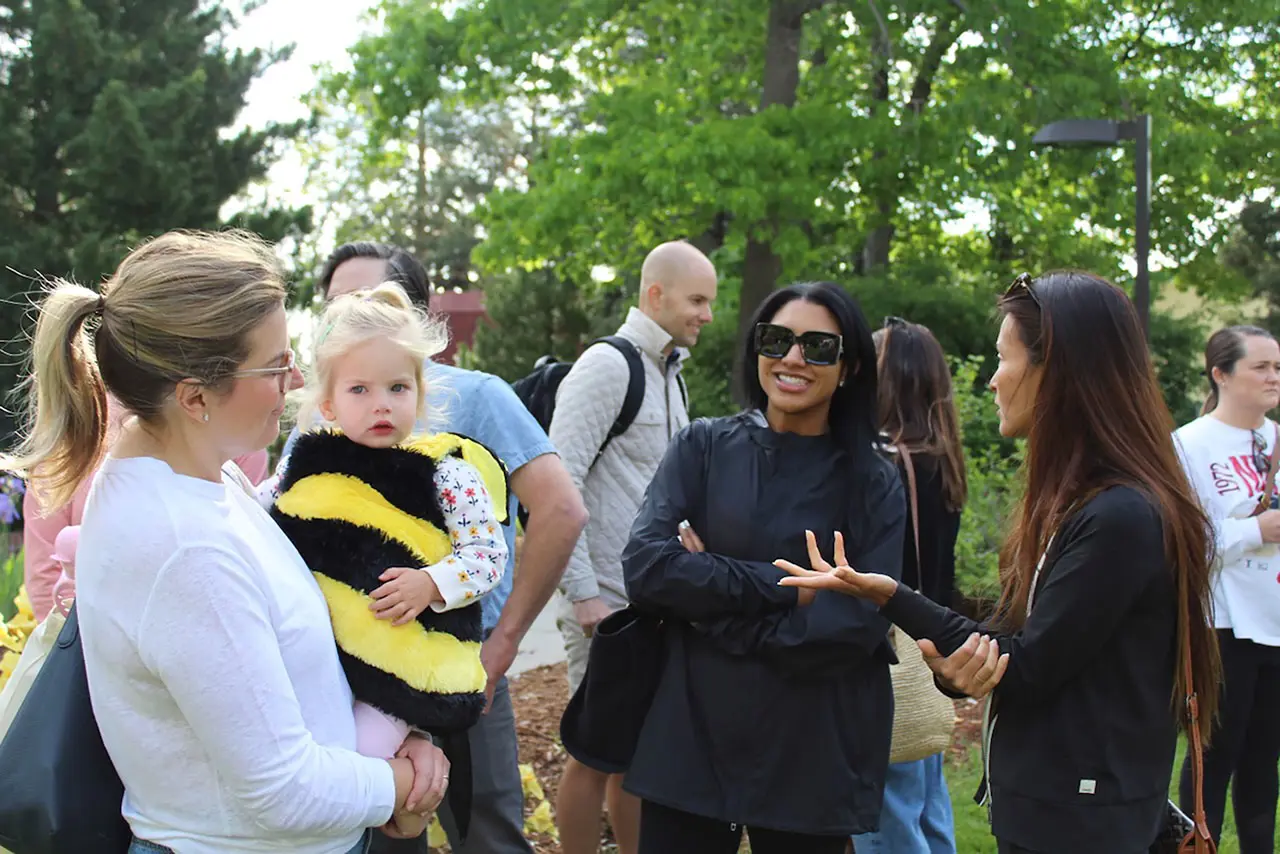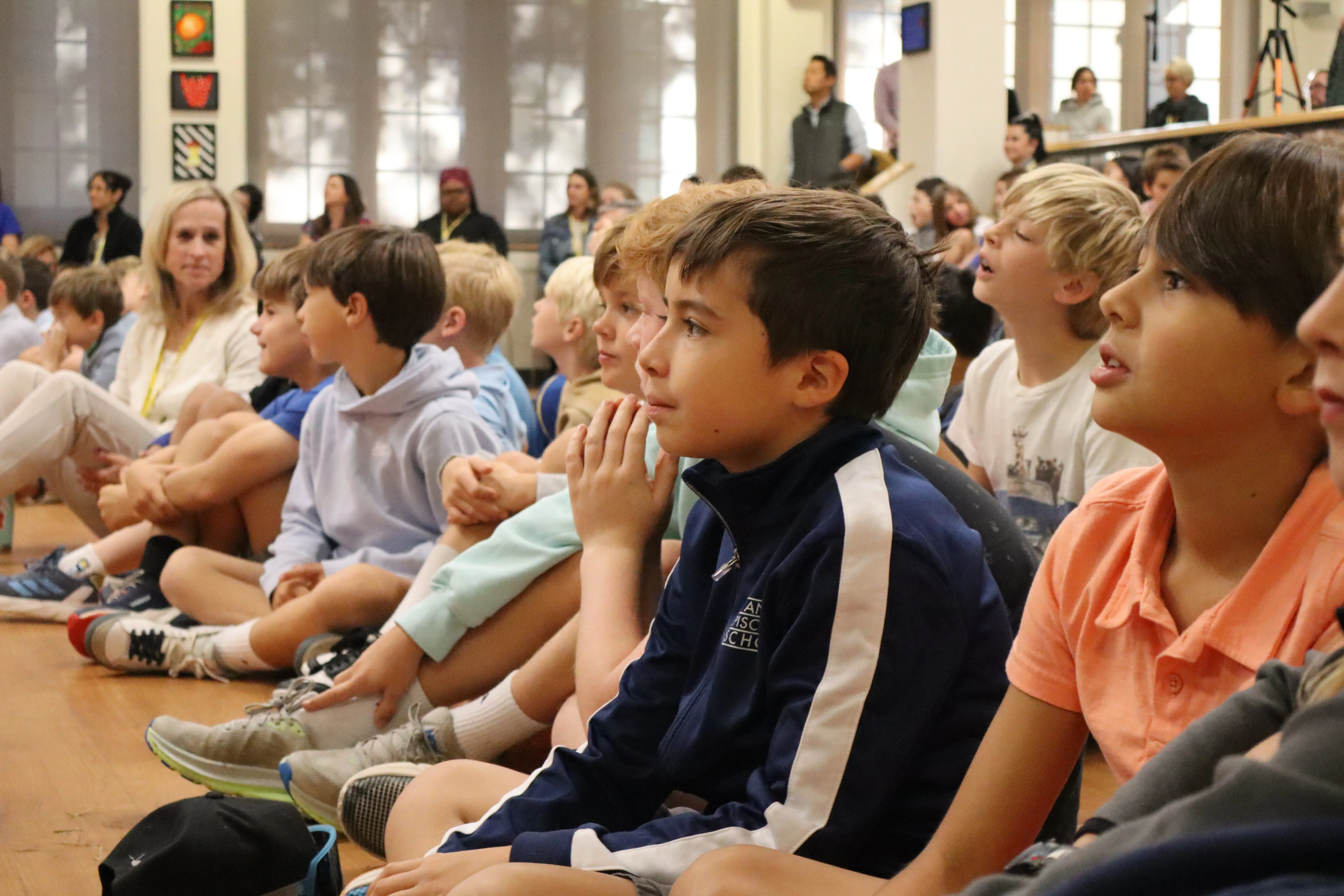Fifth Grade Overview
Fifth grade is an exciting and pivotal year when students embark on a journey of academic excellence and personal growth. With a strong focus on preparing students for the transition to middle school, the curriculum emphasizes:
- Advanced Literacy and Numeracy Skills:
Students refine their reading comprehension and master complex mathematical concepts.
- Science and Social Studies:
Students expand their understanding of the world through hands-on experiments and critical analysis, exploring diverse topics.
- Enrichment Opportunities:
Students engage in creative outlets such as art, music, physical education, drama, and design thinking, while also learning new languages like Spanish and French. - Leadership and Collaboration:
The supportive community at St. Anne’s fosters leadership, collaboration, and empathy, preparing students to thrive in an ever-changing world.
| Writing |
|---|
|
By the end of fifth grade, students will be able to write in the following genres:
|
| Grammar |
| In fifth grade, students move from a study of grammar concepts to application. They compose multi-page works to defend opinions and document research. As they mature as writers, there is an increased focus on finding and correcting run-on sentences and sentence fragments. |
| Word Study |
|
The primary goals of the Grade 5 Word Study program
In fifth grade, Word Study is taught four times per each 7-day cycle for 30 minutes each lesson. Students engage in whole class lessons, complete homework assignments, and read a weekly fluency passage. An end-of-unit assessment evaluates a student’s mastery of the concepts taught in the unit. Students are assessed on their ability to apply the spelling rules taught in a list of words, and then integrate their knowledge through a sentence dictation. Vocabulary instruction is also integrated into the fifth-grade Word Study class curriculum. |
| Reading |
|
In fifth-grade reading, students read fiction, nonfiction, informational text, and other genres. Students read class novels and complete an independent reading project. They have writing assignments throughout the novel responding to the reading and checking for comprehension. They also learn comprehension strategies, including cause/effect, character traits, story elements, making connections, inferences, drawing conclusions, analyzing, and using text evidence. Fifth graders also learn about using inflection, pausing at punctuation, and reading fluently and accurately. |
| Math |
|
Students will apply all they have been learning in math to accurately solve real-world problems. By the end of fifth grade, students will add, subtract, multiply, and divide whole numbers, decimals, and fractions. |
| Science |
|
Fifth-grade science is a very hands-on, project-based program. Creative thinking and problem-solving are the main focus of all of our classes. In the fifth-grade performance expectations, students are expected to demonstrate grade-appropriate proficiency in developing and using models, planning and carrying out investigations, analyzing and interpreting data, using mathematics and computational thinking, engaging in argument from evidence, and obtaining, evaluating, and communicating information. They will use these practices to demonstrate understanding of the core ideas. |
| Social Studies |
|
In fifth-grade social studies, students explore the history of the United States of America.
|
| Music |
|
The fifth-grade curriculum is designed to cultivate a well-rounded musical experience, fostering creativity, expression, and a deeper understanding of the language of music. Through a variety of engaging activities, students will develop skills in singing, playing instruments, improvisation, composition, and the ability to read and notate designated rhythms. Students are encouraged to try new instruments and explore. Each day of class emphasizes active listening to diverse musical excerpts; establishing connections between emotion and human experience; and developing empathy, cultural awareness, and an appreciation for the language and skills learned. |
| Art |
|
Fifth graders will start the year drawing southern Chinese mountain landscapes, then using watercolor and other mediums to complete a finished work of art. Students will produce ceramic seated figures, chia pets, optical illusion art, Northwest Native American masks, renderings of historical masterworks, life drawings, nature drawings, and other projects, time permitting. We integrate classroom curriculum in the art space to add depth to the students’ learning. |
| French |
|
Fifth-grade French is a cultural and linguistic exploration of France and the francophone world. Through their discovery of French culture and language, students will acquire vocabulary for:
In addition, students are exposed to the immersion classroom by participating in activities, using the Organic World Language (O.W.L.) methodology and/or CI (comprehensible input), primarily used in the middle-school French curriculum. |
| Spanish |
|
Fifth-grade Spanish is a cultural and linguistic exploration of Spanish, Spanish-speaking countries around the world, and the value and importance of learning another language and culture. Through their discovery of Spanish culture, students will acquire vocabulary for:
In addition, students are exposed to the immersion classroom by participating in activities, using the Organic World Language (O.W.L.) methodology and/or CI (comprehensible input), primarily used in the middle-school Spanish curriculum. |
| PE |
|
The ultimate goal of St. Anne’s physical education program is to involve students in developmentally appropriate movement experiences that focus on learning to move and learning through movement. In “Developmental Level Two,” third, fourth, and fifth graders learn to cooperate, apply rules and strategies, and compete in a sportsmanlike manner. Students learn how to make healthy choices. They transfer previously learned movement skills to new activities and other challenging movement skills. Various sports, fitness, and rhythmic activities are introduced and practiced. Participation in games, learning stations, and drills assists in the development of mature movement patterns. Such participation provides a process that encourages all students to refine their skills and engage in lifelong physical activities. |
| Design Thinking & Innovations |
|
Fifth graders embark on their final year of Lower School Technology within the Design Thinking and Innovations Lab. Students continue to explore ways technology can enhance our ability to research, learn and communicate, as well as transform and reshape our world. They engage in discussions about digital citizenship, computer sciences, and digital design. |
| Library |
| The fifth-grade library curriculum promotes students’ critical thinking, centers effective and ethical use of information, and fosters a lifelong love of reading and learning. The librarian collaborates with teachers to align library activities with classroom units of study and support student learning across subjects. |
| Drama |
| The focus of the fifth-grade drama curriculum is to understand the importance of working as an ensemble and the significance of contributing to the bigger picture through the creation of a theatrical piece. In the creative process, students are introduced to a variety of improvisational techniques: exploration of characterization, pantomime, movement, and character motivations. At the conclusion of their fifth-grade year, students will have the opportunity to both perform and critically respond to their performance through reflection and evaluation of their participation in the artistic process. |
| Religion |
|
Review of Bible Composition, History of Christianity, Indigenous Spirituality Having studied the stories from the sacred texts in Hebrew and Christian traditions, fifth graders begin the year with an overview of the Biblical timeline and structure, as well as its major figures and events. Picking up with the book of Acts, we proceed to study the formation of the Church as a movement within the context of the Roman Empire. We cover the East-West Schism, beginning of Protestantism and Anglicanism, and Social Gospel. In spring time we transition to the indigenous spirituality (North American and African traditions). Emphasis is placed on the ethical implications of religion and spirituality. Like in all grades in Lower School, we mark significant religious observations in Judaism, Islam, Buddhism and Hinduism, which is an entryway into non-Christian faiths that lays the foundation for further study of world religions in the Middle School. By the end of 5th grade students will have solidified their knowledge of the Judeo-Christian stories and can navigate the Bible; they have general knowledge of how Christianity came together and can explain its central beliefs. Students who complete this year will know basic facts about five world religions and will conduct a summarizing project when they prepare for a dialogue with a person who practices one of those traditions. |
| Outdoor Education |
|
Fifth-grade students will participate in multiple SAITH overnight trips, as well as skill-building outdoor recreation trips. In the fall, fifth-grade students will focus on community building and transitioning into their final year of elementary school, with kindness and inclusivity at the forefront of their actions and motivations. Students will continue the deep dive into the exploration of their environment and ecosystems. They will begin to prepare for leadership development that will take place and be center to their middle school outdoor education experiences. |









